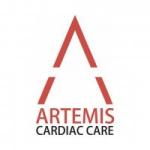Heart attack is a leading cause of death worldwide. Angiography is a medical procedure that can help diagnose and treat heart attacks. In this article, we will discuss everything you need to know about angiography and heart attack treatment..
Table of Contents
- Introduction
- Understanding Angiography
- Definition of Angiography
- Types of Angiography
- Diagnosing Heart Attacks
- Causes of Heart Attacks
- Symptoms of Heart Attacks
- Importance of Early Diagnosis
- Angiography Procedure
- Pre-Procedure Preparation
- The Procedure
- Post-Procedure Care
- Heart Attack Treatment
- Medications
- Angioplasty
- Bypass Surgery
- Recovery and Aftercare
- Risks and Complications
- Conclusion
- FAQs
Understanding Angiography
Definition of Angiography
Angiography is a medical procedure that uses X-rays and a special dye to visualize the blood vessels in the body. It is used to diagnose and treat a variety of medical conditions, including heart disease. During an angiography procedure, a catheter is inserted into a blood vessel and guided to the area of interest. The contrast dye is then injected through the catheter, and X-rays are taken to create images of the blood vessels.
Types of Angiography
There are several types of angiography procedures, including:
- Coronary angiography: used to visualize the blood vessels in the heart.
- Cerebral angiography: used to visualize the blood vessels in the brain.
- Pulmonary angiography: used to visualize the blood vessels in the lungs.
- Renal angiography: used to visualize the blood vessels in the kidneys.
Diagnosing Heart Attacks
Causes of Heart Attacks
A heart attack occurs when the blood flow to the heart is blocked, often by a blood clot. This blockage can be caused by a buildup of plaque in the arteries, a condition known as atherosclerosis.
Symptoms of Heart Attacks
The symptoms of a heart attack can vary from person to person, but may include:
- Chest pain or discomfort
- Shortness of breath
- Nausea or vomiting
- Sweating
- Fatigue
- Dizziness or lightheadedness
- Pain or discomfort in the arms, neck, jaw, or back
Importance of Early Diagnosis
Early diagnosis of a heart attack is critical for successful treatment. If you are experiencing symptoms of a heart attack, it is important to seek medical attention immediately.
Angiography Procedure
Pre-Procedure Preparation
Before an angiography procedure, your doctor will give you instructions on how to prepare. This may include fasting for a certain period of time before the procedure, stopping certain medications, or undergoing blood tests.
The Procedure
During the angiography procedure, you will lie on a table while a catheter is inserted into a blood vessel, usually in the arm or groin. The catheter is then guided to the area of interest, and contrast dye is injected through the catheter. X-rays are taken to create images of the blood vessels.
Post-Procedure Care
After the angiography procedure, you will be monitored for a short period of time to ensure there are no complications. You may need to stay in the hospital for a few hours or overnight, depending on the type of procedure you had.
Heart Attack Treatment
Medications
There are several medications that can be used to treat heart attacks, including:
- Aspirin: helps to prevent blood clots from forming.
-
Angioplasty
Angioplasty is a procedure that can be used to treat a heart attack. During this procedure, a small balloon is inserted into the blocked artery and inflated to open up the artery and improve blood flow. In some cases, a stent may also be inserted to help keep the artery open.
Bypass Surgery
Bypass surgery is another option for treating heart attacks. During this procedure, a healthy blood vessel is taken from another part of the body and used to bypass the blocked artery. This allows blood to flow more freely to the heart.
Recovery and Aftercare
After a heart attack, it is important to take steps to prevent future heart problems. This may include:
- Taking medications as prescribed
- Making lifestyle changes, such as quitting smoking, eating a healthy diet, and exercising regularly
- Attending follow-up appointments with your doctor to monitor your progress
Risks and Complications
Like all medical procedures, angiography and heart attack treatment carry some risks. These may include:
- Bleeding or bruising at the catheter insertion site
- Allergic reaction to the contrast dye
- Blood clots
- Infection
It is important to discuss the risks and benefits of any medical procedure with your doctor before undergoing treatment.
Conclusion
Heart attack is a serious medical condition that requires prompt diagnosis and treatment. Angiography is an important tool for diagnosing and treating heart attacks, and there are several treatment options available, including medications, angioplasty, and bypass surgery. If you are experiencing symptoms of a heart attack, it is important to seek medical attention immediately.
FAQs
- How long does an angiography procedure take?
- The procedure typically takes 30 minutes to an hour.
- Is angiography painful?
- Most people do not experience pain during the procedure, but may feel some discomfort at the catheter insertion site.
- Can angioplasty be done during the same procedure as angiography?
- Yes, angioplasty can often be performed during the same procedure as angiography.
- How long does it take to recover from a heart attack?
- Recovery time can vary depending on the severity of the heart attack and the individual's overall health, but may take several weeks to several months.
- Can a heart attack be prevented?
- While there is no guaranteed way to prevent a heart attack, making lifestyle changes such as eating a healthy diet, exercising regularly, and quitting smoking can help reduce the risk.

 Comments (
Comments ( Category (
Category ( Views (
Views (